Blossom Smart Watering Controller Review
by Ganesh T S on August 28, 2015 8:10 AM EST
Introduction and Component Analysis
Home automation has garnered renewed attention, thanks to the Internet of Things (IoT) revolution. Many vendors targeting this market look to deliver solutions for aspects appealing to a broader audience. Some examples include lighting, temperature control, security using IP cameras etc. Irrigation control is a niche within the home automation niche. At first glance, it appears to be a limited market, as only those with gardens big enough to require scheduled / automated watering of multiple zones might need it. Surprisingly, there are many options for people looking to gain IP control over their irrigation / watering system's functioning. iConservo's Blossom is one such option. It is one of the very few crowd-funding projects that actually managed to ship on schedule.
An irrigation system in the typical US home takes water from the main line through a backflow prevention device and supplies it to one or more sprinkler valves. These sprinkler valves can be controlled using low voltage (typically 24V) electrical current from an irrigation controller. Traditional irrigation controllers (i.e, those designed prior to the smartphone age) rely on a complex interface to set up the schedule. For example, the 'programming interface' for the Hunter Pro-C (which was replaced by the Blossom Smart Watering Controller in our review setup) is shown below. Operation without going through a manual at least once is quite difficult.
The Hunter Pro-C that was replaced by the Blossom Smart Watering Controller
The sets of sprinkler(s) connected to the valve(s) that can be turned on with the same signal constitute an irrigation zone. The irrigation controller is the brains behind the whole irrigation system, as it handles the scheduling related to the activation and deactivation of each zone. Controllers are marketed based on the number of zones they can support. While the sprinklers and valves may be spread all over the garden, consumers usually opt to keep the controller in the garage (since it needs to be near a power outlet)
The technical specifications of the Blossom Smart Watering Controller, as provided in their marketing collateral, is reproduced below.
There are a number of popular irrigation controllers in the market. Blossom tries to differentiate itself with a unique set of features that don't seem to be present together in any other offering. These include:
- IP54 rating for outdoor installation (high level of protection against particles and a fair amount of protection against water)
- Communication via either Wi-Fi or powerline (useful in the case that the unit is mounted out of reach of a stable and strong Wi-Fi signal)
- Automated weather intelligence via the cloud (for example, scheduled watering could be turned off in the case of rainfall)
Blossom's marketing collateral also provides a handy comparison table that has been reproduced (with slight modifications) below.
Blossom claims to have a web app (marked 'Coming Soon') in their version of the above table. I have taken the liberty to alter it as control via a web browser is not currently available.
Designing a network-connected irrigation controller to operate on a schedule is not rocket science (from a hardware viewpoint). Consumers familiar with microcontrollers and relays may find a DIY solution to be more exciting. Based on FCC filings and a press release, we determined that the Blossom uses the following hardware:
- AzureWave AW-CU282 Wi-Fi SoC module
- Qualcomm Atheros QCA7000 HomePlug powerline communication IC
The AzureWave Aw-CU282 Wi-Fi SoC solution targeting the IoT market consists of the Marvell 88MC200 microcontroller and a Marvell 88W8792 1x1:1 802.11abgn Wi-Fi chip. The microcontroller integrates a 200 MHz Cortex-M3 core and 1MB of flash memory. It also supports up to 63 GPIOs (general-purpose IOs), and this comes in handy when attempting to interface with the electrical relays on the board.
The Qualcomm Atheros QCA7000 is compliant with HomePlug Green PHY specifications and comes with an integrated AFE (analog front end), making it suitable for energy management / home automation purposes. Transfer rates are of the order of 4 - 10 Mbps, but, Blossom doesn't need much bandwidth (only the schedules need to be set).
The low power nature of all the components in the unit ensures that this always-on device is a green one.


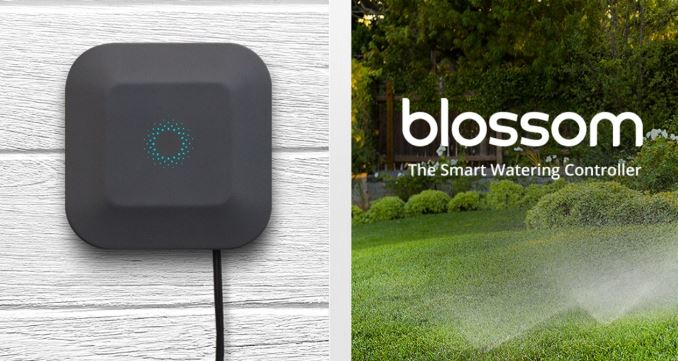
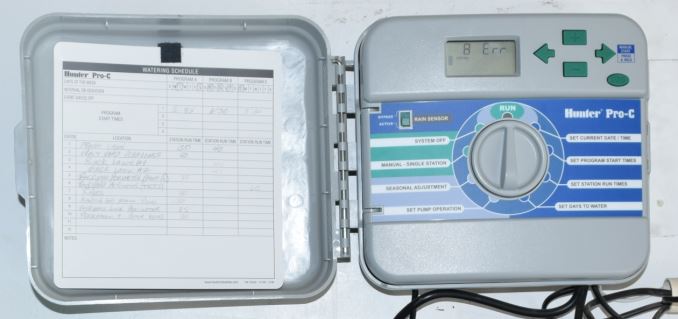
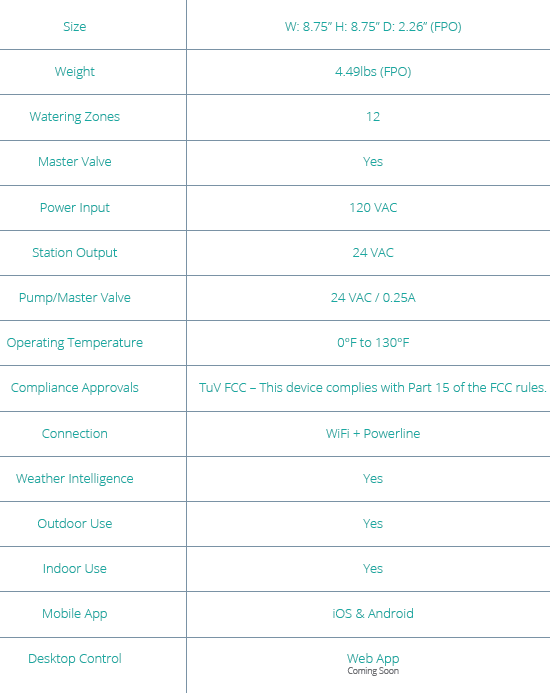
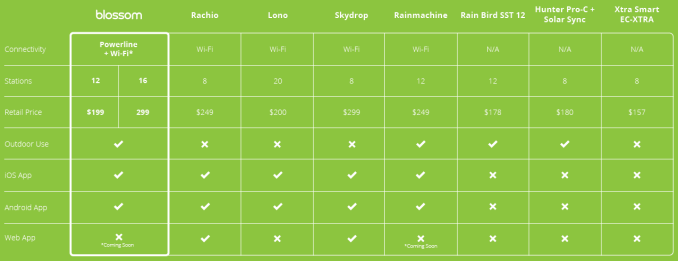
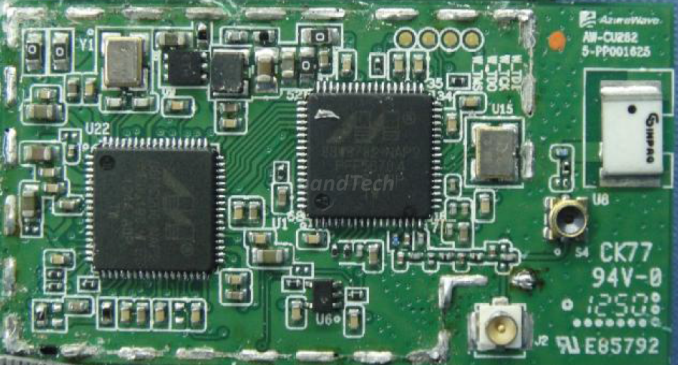

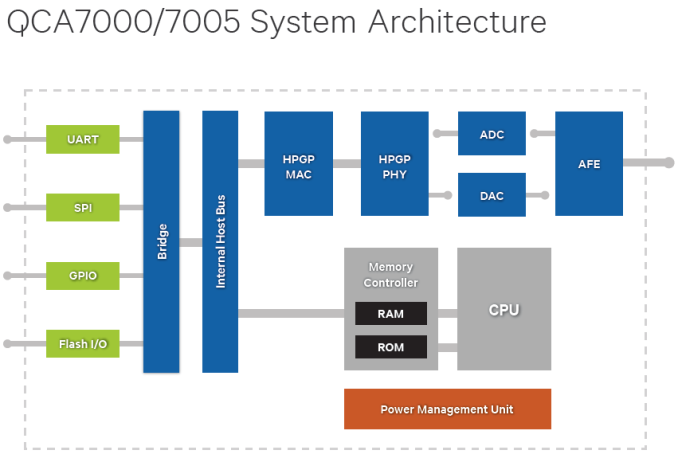








47 Comments
View All Comments
Colin1497 - Friday, August 28, 2015 - link
Wait, Rainmachine doesn't have iOS and Android apps?http://www.rainmachine.com/howitworks.html
You might want to fact check that.
ganeshts - Friday, September 4, 2015 - link
This has been fixed. Thanks for bringing it to our notice. The marketing collateral was quite old, and I should have fact-checked for the current status before publishing.freeskier93 - Friday, August 28, 2015 - link
Good to see more options. We have a Rachio and while expensive has been worth every penny. The smart watering is in beta but is working very well, the general support of the product is also fantastic.Also to the guy above essentially calling everyone a moron if they don't build something like this themselves. I'm actually an engineer, aerospace to be exact with lots of knowledge in electrical and software. The hardware on these devices isn't complicated but the software is non trivial. I have no desire to re create these algorithms for smart watering, I have better things to do with my time (which is worth quite a bit).
mailinh - Friday, August 28, 2015 - link
Much of the landscape hydration systems already have more control than most people use and do not required this useless add on.V900 - Friday, August 28, 2015 - link
Unfortunately, the IOT-enthusiasts still think that "Yeah, but now you can do it FROM YOUR PHONE!" is an actual argument for buying one.Unfortunately, non-geeks are rather crucial for IOT to become a success,and they're not as easy to impress...
V900 - Friday, August 28, 2015 - link
Unless you're either managing acres of land, or have a small farm, what exactly is the point here?You'll still waste water, using this rather than the manual way of watering. Sure, you'll waste a little less water than with the old fashioned sprinklers, but overall you're not much better off, unless you water your garden yourself.
It's not that hard. Take five minutes to walk around your garden, and look and touch. You'll quickly see which ones need water. You'll actually also learn something over time, rather than leave that oh, so overwhelming task of watering your plants to your smartphone and an app.
Arls - Friday, August 28, 2015 - link
Hand watering is the least efficient and most time consuming waste of your time.This product, and others like it will provide anyone with sprinklers an efficient watering solution.
Arls - Friday, August 28, 2015 - link
As a professional in the irrigation industry I have only seen one of our customers (out of a few thousand) buy a blossom.So far in my experience a local weather station such as Hunters Solar Sync provide the most effective hands off irrigation solution. Its able to measure evapotranspiration on site with the unit supplying updated run times daily. I'm not convinced using weather data from the cloud will ever be as good as having local data. Too many weather variables, for example in my town sun/rain/wind very significantly only a few miles apart.
Having wifi, PL connectivity and an app are always welcome additions. Being able to use your phone as a remote to turn on or off zones on the fly is a HUGE advantage. Current irrigation specific solutions are overpriced (way overpriced).
The ideal solution is a combination of functions. An app, wifi and PL connectivity, a local weather station and hands on control. Not every home automation device needs the cloud to function better. Having cloud connectivity will benefit other devices in the IoTs realm more so than irrigation.
Sttm - Friday, August 28, 2015 - link
Articles like this make me realize that at least where I am living in CA I'll probably never find a use for that fancy IoT Water Control system. As when/if I can afford a house, I will probably be having someone else manage the landscaping and as such setting the control panel.TheSlamma - Saturday, August 29, 2015 - link
No manual interface.. so how does your sprinkler guy blow out the system if you are not at home when he comes to do it and the valves don't have local control either. Every sprinkler controller should have a manual control on it no exceptions and not just for blowouts, for emergencies where a line or a head breaks and it's flooding.Also don't use Hunter clocks in ANY situation, only a schlub would install those pieces of junk builder grade RAGS, you use Irritrol or a Weathermatic. If you do think you need this unnecessary digital wifi BS for a sprinkler system then get a Skydrop.